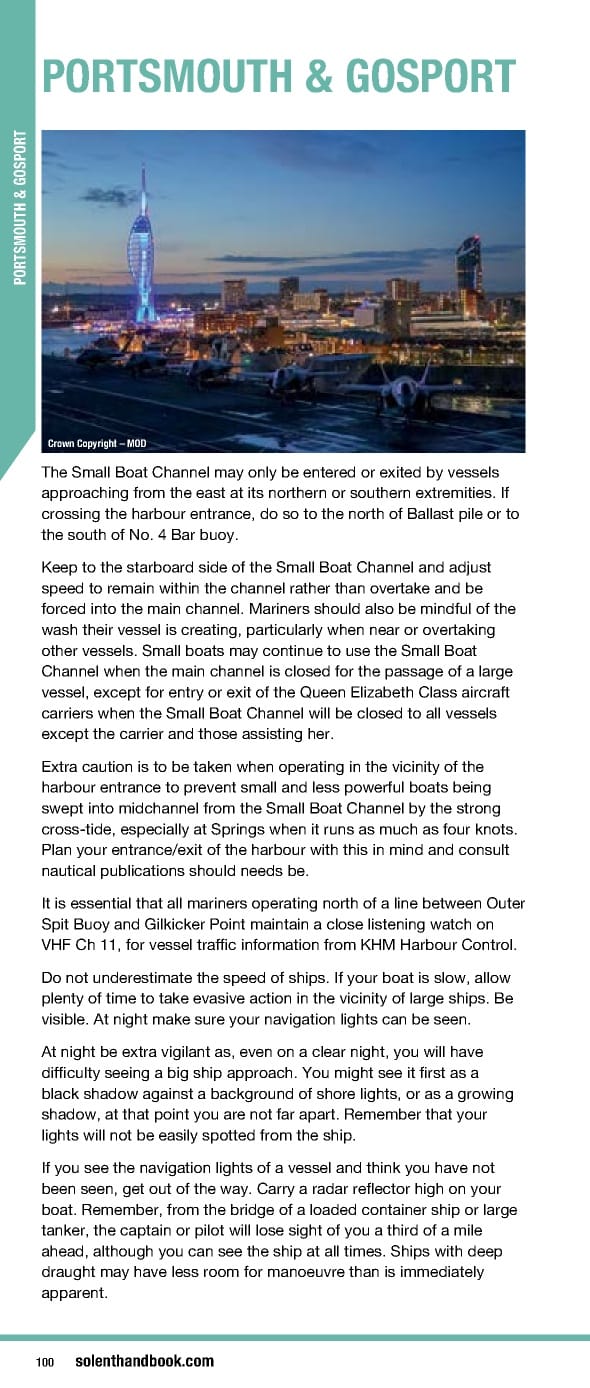PORTSMOUTH & GOSPORT T TSMOUTH & GOSPOR POR Crown Copyright – MOD The Small Boat Channel may only be entered or exited by vessels approaching from the east at its northern or southern extremities. If crossing the harbour entrance, do so to the north of Ballast pile or to the south of No. 4 Bar buoy. Keep to the starboard side of the Small Boat Channel and adjust speed to remain within the channel rather than overtake and be forced into the main channel. Mariners should also be mindful of the wash their vessel is creating, particularly when near or overtaking other vessels. Small boats may continue to use the Small Boat Channel when the main channel is closed for the passage of a large vessel, except for entry or exit of the Queen Elizabeth Class aircraft carriers when the Small Boat Channel will be closed to all vessels except the carrier and those assisting her. Extra caution is to be taken when operating in the vicinity of the harbour entrance to prevent small and less powerful boats being swept into midchannel from the Small Boat Channel by the strong cross-tide, especially at Springs when it runs as much as four knots. Plan your entrance/exit of the harbour with this in mind and consult nautical publications should needs be. It is essential that all mariners operating north of a line between Outer Spit Buoy and Gilkicker Point maintain a close listening watch on VHF Ch 11, for vessel traffic information from KHM Harbour Control. Do not underestimate the speed of ships. If your boat is slow, allow plenty of time to take evasive action in the vicinity of large ships. Be visible. At night make sure your navigation lights can be seen. At night be extra vigilant as, even on a clear night, you will have difficulty seeing a big ship approach. You might see it first as a black shadow against a background of shore lights, or as a growing shadow, at that point you are not far apart. Remember that your lights will not be easily spotted from the ship. If you see the navigation lights of a vessel and think you have not been seen, get out of the way. Carry a radar reflector high on your boat. Remember, from the bridge of a loaded container ship or large tanker, the captain or pilot will lose sight of you a third of a mile ahead, although you can see the ship at all times. Ships with deep draught may have less room for manoeuvre than is immediately apparent. 100 solenthandbook.com
 Solent Handbook & Directory April 2023- March 2024 Page 99 Page 101
Solent Handbook & Directory April 2023- March 2024 Page 99 Page 101